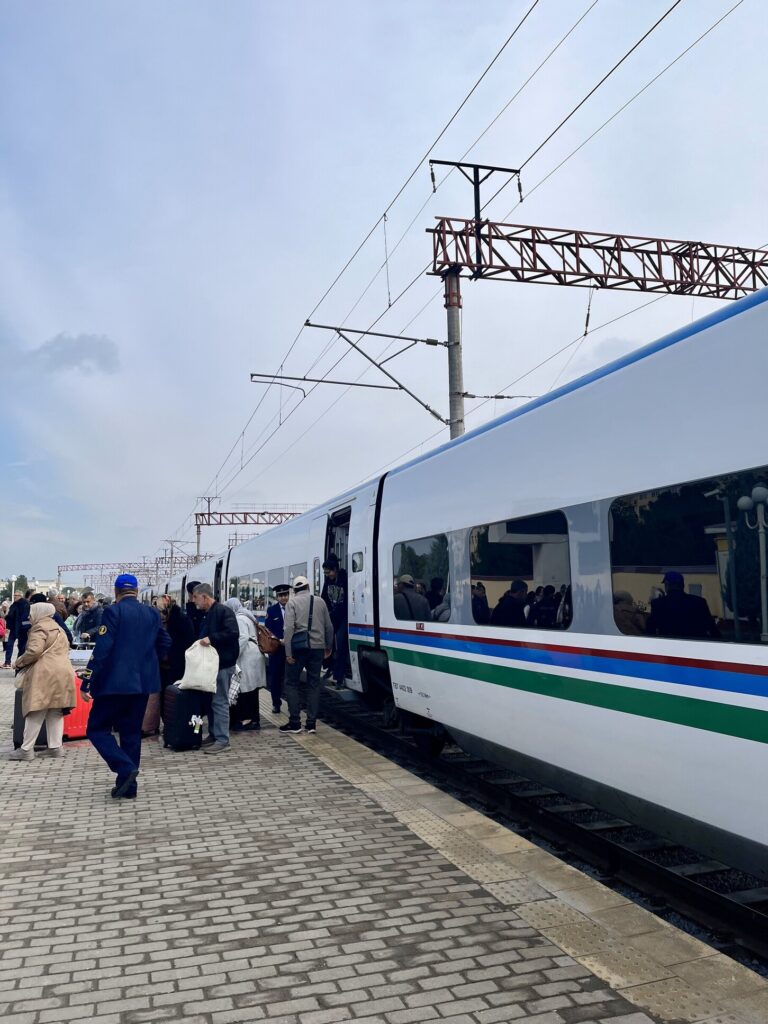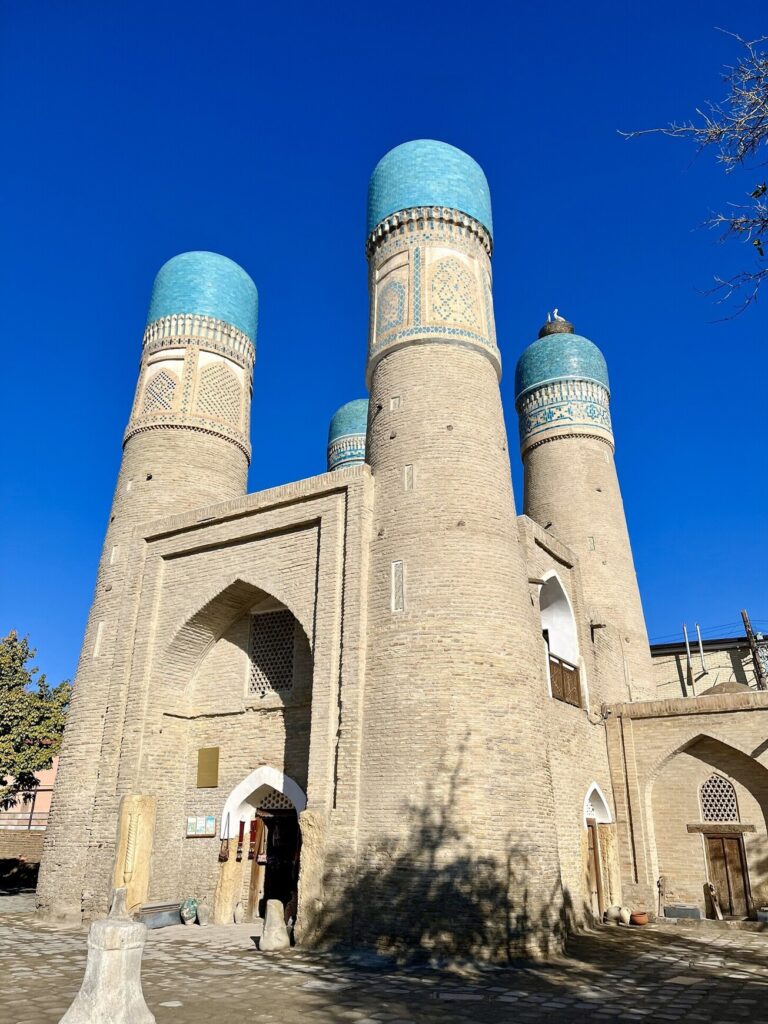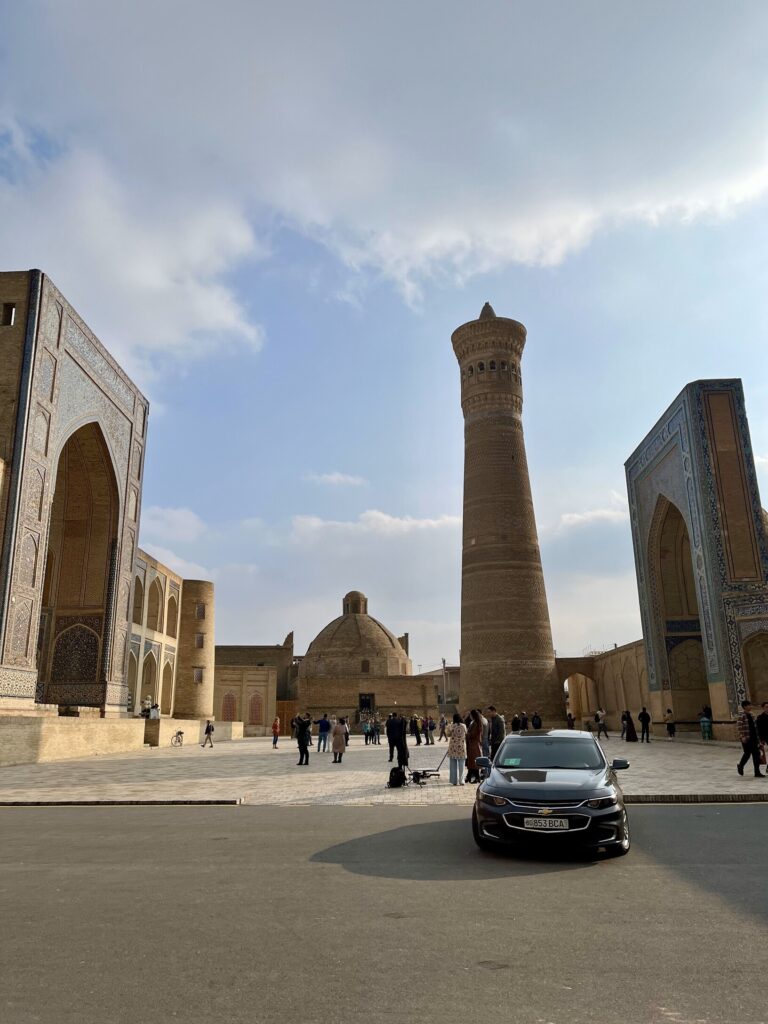The good thing about Samarkand train station is that there’s only one platform. So if there’s a train arriving more than 20min before your departure time, it’s probably not yours. I got annoyed by tour groups again, so let’s skip that part. Less than 2h later by high speed rail, we arrived in Bukhara.


Bukhara was my least favourite city in Uzbekistan, though that might have been partly my fault for not engaging a guide. Rather than going to a particular attraction, the whole city center seemed to be a big, free museum, which obviously doesn’t come with explanations.
Our hotel, whilst on the more luxurious end, was disappointing too because I had booked it thinking breakfast would be served in the courtyard (the hotel was converted from an old madrasah). The courtyard was closed when we were there and we had breakfast in the lobby instead. The rooftop was also closed for construction so no views of Lyabi Khauz. And no matter how many stars, hotel beds in Uzbekistan are rock hard.
We also got scammed at a restaurant which overlooked the Ulugbek madrasah. They charged us double the usual cost of a good meal (bill came up to $24, or 6 days worth of the local minimum wage). So for all intents and purposes, please avoid Zargaron plov.








Scams aside, read up before you go to Bukhara. Here are two important historical points:
Before most of Central Asia became Turkic, it was inhabited by Iranians. Ismail Samani was a ruler from the (Iranian) Samanid dynasty in the 800s, with Bukhara as the capital. His reign was focused on protecting his state from Turkic raids, which wanted to establish Turkic Shia control over Central Asia. Under him, the region remained under the control of Sunni Iranians. With Tajikistan the last bastion of the Iranian people of Central Asia since its turkification, the Tajiks consider Samani as their national hero and the founder of the Tajik homeland. He is known as Ismoil Somoni in Tajikistan; his statue is the main attraction of Dushanbe (see my Dushanbe post), the country’s tallest peak (Ismoil Somoni peak) and the currency (Tajik somoni) are named after him. Which then makes it rather strange that his remains are buried in the Ismail Samani Mausoleum in Bukhara, Uzbekistan. Imagine if your country’s national hero was born and buried in another country.


In 1220, the Mongols -led by Genghis Khan- laid siege to Bukhara, which was at the time one of the great cities in Central Asia. Bukhara’s population then was 300,000, the same as what it is today, except that the world now has 22 times more people, so you do the math. The Mongols killed everyone in the citadel (now a tourist attraction called the Ark of Bukhara), enslaved most of the city’s population, and destroyed it by fire. However, the destruction was mild by Mongol standards, and Bukhara managed to regain its former glory as a center of trade and knowledge along the Silk Road.






Not much more to add, other than you can probably finish Bukhara in a day.


Hi! I am Joey, a University student from Singapore, attempting to show my appreciation for the world’s most powerful passport by literally milking its visa-free benefits one country at a time. I describe my travel budget as shoestring and travel style as audacious.

Slide into my comments section...